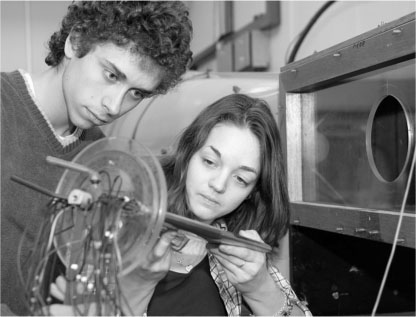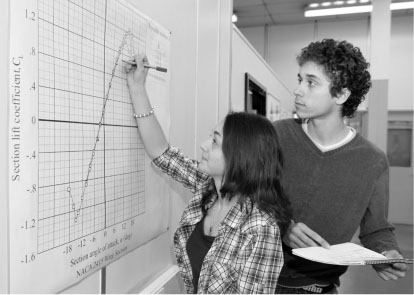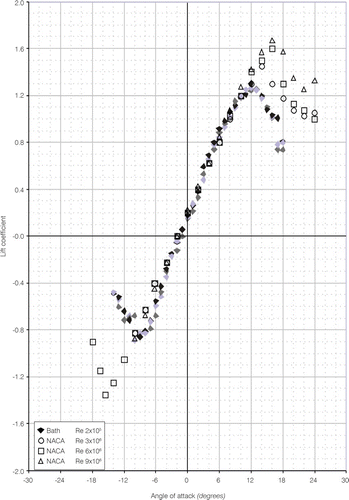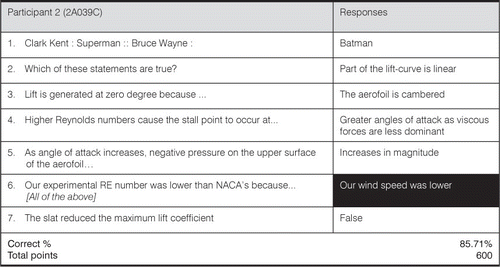Abstract
Undergraduate engineering lectures are often supplemented with experimental laboratories and, at the 21st century university, such practical classes often involve large groups. It is important that these sessions are interactive, not passive, and that students are encouraged to participate throughout the laboratory to ensure that their learning experience is maximised. A variety of teaching techniques have been applied to an undergraduate fluid mechanics laboratory, aimed at enhancing student contribution and participatory learning. Large scale graphs have been used to immediately illustrate the collected data, giving students opportunities to assess and discuss their meaning. Question sheets have encouraged undergraduates to consider experimental procedures and apparatus, keeping them active. The use of an audience response system as part of the plenary has been particularly successful, ensuring that students are engaged right to the very end of the laboratory and encouraging them to participate actively by answering multiple choice questions. Students can assess their personal scores online after the laboratory session, getting instant positive feedback from the class. Although the methods are discussed in the context of a fluid mechanics laboratory, these techniques would be widely beneficial to other undergraduate engineering and science laboratory exercises.
Introduction
Fluid mechanics is an important part of the undergraduate syllabus in many engineering disciplines. It is a topic which has a rigorous mathematical base, and flow visualisation offers important qualitative insight into the fundamental physics governing the dynamic equations. Engineering departments therefore demonstrate some important aspects of fluid dynamics using low-Reynolds-number wind tunnels (CitationAhmed, 2004), which extend key theoretical concepts beyond the levels introduced in lectures. Such laboratory sessions offer students the opportunity to engage not just with the teacher but also with each other, creating a different learning experience to the passive lecture. With large groups (typically 10+ students), it can be a challenge to actively engage students throughout the laboratory session and ensure that they grasp the important theoretical concepts and the necessary experimental practice. This paper will describe and discuss a variety of techniques to encourage participation and stimulate student learning during a fluid mechanics laboratory. These techniques also have a general application to any undergraduate laboratory exercise or practical classroom.
Student education
Student learning tends to fall into two distinct categories: deep or surface learning (CitationMcMahon, 2006 - as first proposed by CitationMarton and Saljo, 1976). A deep approach will see students aiming to understand the subject matter beyond what is originally presented to them, thus engaging with the topic and interacting beyond the usual passive acceptance of authority. A surface learning technique differs in that students tend to take a far more narrow approach to their education, participating less with topics and focusing purely on the information supplied to them (CitationProsser and Trigwell, 1999).
Students’ education can be influenced by their personal experience of learning and the way in which they engage with a subject. There are a variety of techniques that have been designed to encourage deep learning and help students reach beyond the surface approach (CitationMcMahon, 2006; CitationGibbs, 1992). Active participation is an important factor in the achievement of deep learning, whilst a passive reception of knowledge takes a more basic educational route. By engaging in critical reflection for example (identified here by the publication of results online for students in the section entitled Audience response system), a more effective learning process can occur by transferring from a student-teacher based learning method to a more autonomous approach (CitationMcMahon, 2006). Indeed, it has been suggested that, through these processes, consequential learning is far more effective and transferable (CitationKolb, 1984). Active learning can also be facilitated through group work, where students are stimulated by working in teams (as demonstrated below in Setting the scene).
Setting the scene
The Department of Mechanical Engineering at the University of Bath offers a suite of undergraduate four-year MEng (Master of Engineering) programmes with seven themes in Aerospace, Automotive, Mechanical, Manufacturing, Medical, Sports and Innovative Design Engineering. All of these individual programmes follow two common initial years. One of the core units within this programme is a lecture course in fluid mechanics taught to 200+ students in year 2 (CitationLock, 2007). As part of this course students undertake a laboratory session to demonstrate fluid dynamics in an experimental setting (CitationLock, 2007; CitationLock et al., 2009). This laboratory emphasises a fundamental understanding of the fluid dynamic boundary layer and offers undergraduates the opportunity to investigate this concept through experimental demonstration and experience that may not otherwise be possible in a traditional lecture.
The laboratory exercise is described by CitationLock et al. (2009) and explores the generation of lift over a NACA 2415 aerofoil in a simple open return circuit wind tunnel at a Reynolds number, Re = 2 × 105. Static pressure measurements are taken from positions on the upper and lower surface of the aerofoil in order to calculate the pressure coefficient (C P ) distribution over a range of angles of attack. An integration of C P yields the lift coefficient (C L ) which is shown to vary linearly with increasing angle of attack until stall. The aerodynamic characteristics are validated against published NACA 2415 data at Re = 3 × 106, 6 × 106 and 9 × 106. Re, C P and C L all have standard definitions - see, for example, Anderson (1991).
It is important that all students leave the laboratory session confident in their results and with a clear understanding of the key learning outcomes, theory and engineering applications of boundary layers and flow separation. A variety of techniques have been adopted to enable student engagement and deepen learning beyond the level of a simple experimental demonstration. The laboratory sessions are conducted with groups of ten students in each class over a three hour period and operate throughout the second semester of the academic year. The lecture course covers a variety of topics and the fundamentals of boundary layer separation and aerodynamic stall are not introduced until the end of the semester; consequently many (indeed around two-thirds) of the students have not yet been exposed to the concepts demonstrated in the laboratory session. To overcome this issue there are three plenary PowerPoint slideshow mini-lectures which provide visual impact and insight, carefully introducing each concept. These plenary lectures are less than ten minutes each and are presented by the laboratory instructor at different stages during the session, between periods of data gathering. The presentations are left on the computer so that students can access them throughout the laboratory exercise in their own time, enabling them to better grasp the purpose of the experiments and analyse their results more fully. The group of ten students is split into three teams so that each has the opportunity to have some “hands-on” experience in the wind tunnel and of running the experiments. Whilst one team is preparing the computer acquisition system to take measurements, a second is examining the aerofoil pressure measuring surface (see ), and a third is completing a set of Wind tunnel questions (see Box 1). These activities, though supervised, are designed to strengthen the students’ experimental understanding and encourage them to examine the wind tunnel and its characteristic features under their own initiative. Answering a specific set of questions offers the students opportunities to engage with each other and think more widely about experimental techniques and the purpose and meaning of the experiment. Engagement between students and the laboratory demonstrators is necessary to ensure a constant inquisitive procedure and these introductory methods provide a structure which is popular with all parties.
Box 1 Wind tunnel questions
Question 1
Using a diagram, explain how a pitot-static tube works.
Given that the wind tunnel will be running at ≈20m/s, calculate the difference between the static and stagnation pressures.
Question 2
Where is the fan located and why?
Look at the mouth of the wind tunnel; what are the main features? Discuss their importance.
Question 3
Calculate the Reynolds number for this experiment.
What was the Reynolds number for the NACA experiments?
Question 4
What is the advantage of using non-dimensional coefficients (CP and CL) in calculations?
Deepening understanding of experimental results
It is not uncommon for students to simply attend laboratory sessions, collect the data they need and leave. However, ensuring that they can interpret and understand the data, and how it supports fundamental concepts, is vital. During the laboratory session each team is required to plot their results on a permanent, wall-mounted large-scale lift-curve graph and compare their own data to that collected previously by NACA (National Advisory Committee for Aeronautics, the precursor of NASA) for the same aerofoil (see ).
LOCKColoured marker pens are used on a laminated surface, with the different teams collecting different sets of data and plotting with different colours. This graphic representation provides immediate visual impact and validation and allows each team the opportunity to discuss the meaning, implication and context of their data.
shows a replica of the completed version of the large-scale lift-curve graph used in each laboratory class of ten students. Here the lift coefficient CL collected by the three student teams is plotted as grayscale symbols against the aerofoil angle of attack α. The undergraduates use a low-speed tunnel and a correspondingly low Reynolds number, Re = 2 × 105. Their data can be compared with that published by NACA in a larger-scale tunnel at correspondingly larger Reynolds numbers, Re = 3 × 106, 6 × 106 and 9 × 106 (see Abbott and von Doehoff, 1959). The lift coefficient is seen to increase linearly with angle of attack until the stalling angle, after which there is a dramatic reduction. The data in the linear (inviscid) region correlates well with the NACA data where all four sets of data appear to have the same lift-curve slope. The collected data only differs from the NACA measurements in the region of stall. The maximum lift coefficient, CLmax defines the angle at which the aerofoil stalls and this is shown to increase with Reynolds number. Stall is caused by boundary layer separation, a viscous phenomenon, which is more pronounced at lower Reynolds numbers. For the undergraduate laboratory, the NACA 2415 aerofoil at Re = 2 × 105 has CLmax = 1.3 when at a stall angle αs = 12°. The NACA 2415 is observed to reach CLmax = 1.45, 1.6 and 1.67 as the Reynolds number increases from 3 × 106 to 9 × 106, and there is a corresponding increase in stalling angle. Note there is also stall at large negative angles of attack. This correlation with published data demonstrates that the aerofoil set up in the undergraduate wind tunnel accurately represents the essential features of aerodynamic lift.
Students’ understanding of the relationship between angle of attack and the coefficient of lift, as well as the importance of differing Reynolds numbers, is instantly enhanced by this exercise. They are encouraged to identify salient features on the graph and explain their significance within their teams; these points of discussion are reinforced during the plenary mini-lecture which follows this exercise. The correlation between pressure distribution and the generation of lift is fundamental and a concept that students often struggle to visualise. As part of the laboratory exercise the students plot the distribution of pressure coefficient along the aerofoil chord at angles of attack = 2, 8 and 15°. This exercise is again carried out by the three teams using coloured marker pens on large-scale laminated replicas of the aerofoil with the pressure measurement positions clearly marked.
Audience response system
The use of audience response systems (ARS) has been demonstrated by Cranston and CitationLock (2010), where it was effectively integrated to a year three MEng lecture course in aerospace engineering. Following the success of this class, the same ARS technology was utilised in the laboratory setting, this time with relatively small groups of ten students, contrasting with the 70 students attending lectures in the previous study.
ARS was first introduced at Stanford University in 1966. More recently it has been used in an engineering context by CitationBoyle and Nicol (2003) who evaluated students’ and teachers’ experiences of this technology in peer group and class-wide discussion. The use of ARS has many benefits, and studies have shown improvements in learning through interaction, discussion and quality as well as in assessment due to the immediacy of feedback (CitationBoyle and Nicol, 2003). The Turning Point system is a current ARS fully integrated with Microsoft PowerPoint which offers an interactive environment in which students can answer questions by using the Response-Card keypad or clicker (see ). Only one vote per keypad is allowed, with a small light at the top of the pad indicating when the vote has been cast. The Turning Point software is in popular use by some UK universities, including the University of Bath and University of Glasgow (CitationKay and LeSage, 2009).
Students were asked six questions, plus one ice breaker, designed to test their basic understanding of the day’s laboratory exercise and the fluid dynamics underpinning the experiments. An example set of questions is shown in Box 2. Each student could answer the questions by casting their vote using the clicker, in a manner similar to the “ask the audience” segment of the popular television game show Who wants to be a millionaire? Students could only cast one vote and were invited to select one of several multiple choice answers. Once polling was complete the results were revealed in a percentage split chart and the correct answer then identified (see ). Each question was discussed, particularly if there was confusion over the correct response, so that the class was satisfied with the explanation and fully understood the correct answer. With these small groups the teacher was able to carefully assess the understanding of each individual and ensure that everyone had confidence in the final answer.
Box 2 Audience response questions
Which of these statements are true?
Part of the lift-curve slope is linear
All of the lift-curve slope is linear
None of the lift-curve slope is linear
Lift is generated at zero degrees because…
The aerofoil is symmetrical
The aerofoil is cambered
The boundary layer separates
Higher Reynolds numbers cause the stall point to occur at…
Makes no difference
Smaller angles of attack as viscous forces dominate
Greater angles of attack as viscous forces are less dominant
As angle of attack increases, negative pressure on the upper surface of the aerofoil…
Decreases in magnitude
Increases in magnitude
Doesn’t change
Our experimental Re number was lower than NACA’s because…
Our aerofoil was smaller
Our wind speed was lower
The air was at a different density
All of the above
The slat reduced the maximum lift coefficient
True
False
Every clicker had a unique identification code so that the students could personally investigate their individual results online outside the laboratory environment (as explained below) while their answers would remain anonymous during the session. This empowered them to answer the questions without the fear of being singled out as failing to understand. Students tend to prefer this treatment and their participation is encouraged by using such technologies (CitationBoyle and Nicol, 2003).
The smaller class (relative to a lecture size of ∽ 100) gave the advantage that each student’s response could be analysed immediately following the laboratory session. The results were uploaded to Moodle. Students could immediately evaluate their own results by looking for their personal clicker identification number. This provided immediate, positive feedback for students to support them in self-assessment of their understanding. The students could see the questions that were asked in the session and their respective answers. Where they were correct, the answer was highlighted, whilst an incorrect answer was coloured red and the correct response indicated (see ).
Each question was also graphically illustrated in terms of student response as a pie chart where the correct answer was highlighted (see ). Students could also compare their results with others in the group to assess their relative performance. As this process was anonymous, they were empowered to attempt the questions with confidence and in the absence of the added pressure of being identified as incorrect.
This level of “smart” feedback is a very useful tool to encourage better student performance and aid autonomous learning. Giving feedback at an early stage (in this case immediately following the laboratory) has been shown to have positive effects on retention rates (CitationYorke and Longden, 2004).
Student feedback
A variety of techniques has been used to fully engage students during the laboratory session. These methods worked well as students were active and participated fully throughout the three-hour period of experimentation and discussion. These techniques were received enthusiastically by the small teams as they answered the short introductory questions (Box 1), conducted the experiment and assessed the data and successfully identified important features of the results in their plots. The clicker questions added a sense of fun and helped students to consolidate their understanding of the expected learning outcomes.
Figure 5 Example clicker question with results and correct answer identified shown as part of laboratory presentation
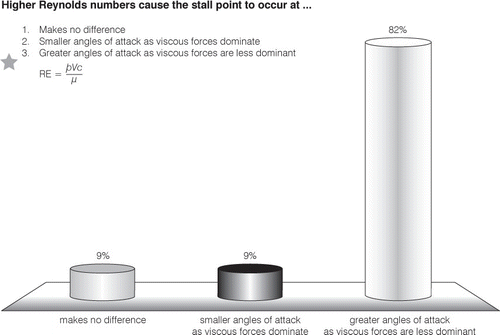
Table 1 Student feedback results (nb. sums may not be 100% accurate due to rounding down)
Feedback was collected from the students in order to assess the effectiveness and success of these techniques. A questionnaire was designed and key results are illustrated in Table 1. This quantitative feedback shows that students agreed that the short introductory questions were helpful in supporting their understanding of the laboratory; written comments attached to the quantitative feedback emphasised that students, having completed these questions, had a far better appreciation of experimental techniques. The clickers were considered by 70% of the students to reinforce their understanding, and many expressed how much they enjoyed using this sort of technology and how it enhanced their learning experience. Importantly, 79% of the students appreciated the immediate feedback from the clickers session and the follow up results that were accessible through Moodle. The students overwhelmingly agreed that the laboratory exercise enhanced their understanding of fluid dynamics and supported the lecture course. They also clearly felt that the laboratory exercise, with the successful techniques described here, compared very well with other undergraduate labs they had encountered.
Concluding remarks
A new undergraduate laboratory exercise has been described, which explores the generation of lift over an aerofoil. The experiment emphasises a fundamental understanding of the fluid dynamic boundary layer and supports a second year lecture course in fluid mechanics. A variety of teaching techniques has been used to encourage direct student involvement, interaction and participatory learning. Students were continuously stimulated throughout the laboratory session, with tasks for small groups as well as for individuals offering them opportunities to enhance their learning experience. Students plotted their collected data on permanent, wall-mounted large-scale graphs; this presentation of information provided immediate visual impact, allowing students the opportunity to discuss the meaning, implication and context of their data. The use of the audience response system (ARS) clickers was successful, not only during the laboratory itself but in enabling students to assess their own personal progress and gain immediate feedback following the session. End of semester student evaluations revealed a high level of student satisfaction and confirmed that their understanding of basic fluid dynamics was greatly enhanced by the new techniques.
Acknowledgements
This project was partially funded by the Royal Academy of Engineering and Exxon-Mobil Prize for Teaching Excellence (Dr GD Lock). The authors are grateful to Jenny Bramley, Guillermo Durango and Nic Delves-Broughton for helping with the photographs.
References
- AbbotI. H. and von DoehoffA. E. (1959) Theory of wing sections, including summary of airfoil data. New York: Dover Publications, Inc..
- AhmedN. A. (2004) Demonstration of the effectiveness and limitations of thin airfoil theory in the aerodynamic study of airfoil characteristics. International Journal of Mechanical Engineering Education, 32, (4), 271-281.
- AndersonJ. D. and von DoehoffA. E. (1991) Fundamentals of aerodynamics. New York: McGraw-Hill.
- BoyleJ. T. and NicolD. J. (2003) Using classroom communication systems to support interaction and discussion in large class settings. Association for Learning Technology Journal, 11, (3), 43-57.
- CranstonG. R. and LockG. D. (2010) Who wants to be an aerospace engineer? Use of an audience response system to stimulate student learning in engineering lectures. Engineering Education: Journal of the Higher Education Academy Engineering Subject Centre, 5, (1), 23-29.
- GibbsG. (1992) Improving the quality of student learning. Bristol: Technical and Educational Services Ltd.
- KayR. H. and LeSageA. (2009) Examining the benefits and challenges of using audience response systems: a review of the literature. Computers & Education, 53, (3), 819-827.
- KolbD. (1984) Experimental learning. Hemel Hempstead: Prentice Hall.
- LockG. D. (2007) Fluid mechanics with historical perspective. Engineering Education: Journal ofthe Higher Education Academy Engineering Subject Centre, 2, (1), 33-40.
- LockG. D., HollandE. C., CranstonG. R., KakadeV., LewisP. R. and PilbrowR. G. (2009) Boundary layers explained: an undergraduate laboratory using an aerofoil with leading-edge slat. International Journal of Mechanical Engineering Education, 32, (1), 45-66.
- MartonF and SäljöR. (1976) On qualitative differences in learning — 1: outcome as a function ofthe learner’s conception of the task. British Journal of Educational Psychology, 46, 115-27.
- McMahonT. (2006) Teaching for more effective learning: seven maxims for practice. Radiography, 12, (1), 34-44.
- ProsserM. and TrigwellK. (1999) Understanding learning and teaching: the experience in higher education. Buckingham: SRHE and Open University Press.
- WitE. (2003) Who wants to be… The use of a personal response system in statistics teaching. MSOR Connections, 3, (2), 14-20.
- YorkeM. and LongdenB. (2004) Retention and student success in higher education. Buckingham: SHRE/Open University Press.
